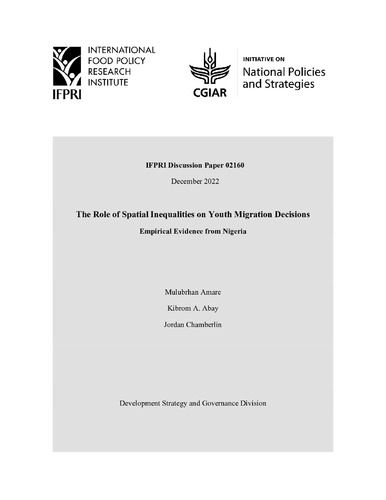The role of spatial inequalities on youth migration decisions: Empirical evidence from Nigeria
Abstract
We combine nationally representative data from Nigeria with spatiotemporal data from remote sensing and other sources to study how young migrants respond to observable characteristics of potential destinations, both in absolute terms and relative to origin locations. Migrants prefer destinations with better welfare, land availability and intensity of economic activity. We also find that migrants prefer shorter distances and those destinations with better urban amenities and infrastructure. However, responses vary by type of migrant and migration. For example, rural-rural migrants are more responsive to land availability and agricultural potential, while rural-urban and urban-urban migrants are more responsive to welfare and economic vibrancy (measured by nightlight intensity) in destinations. Distance induces varying impact on migration choices of poor and non-poor migrants as well as across more educated and less educated migrants. Longer distances discourage migration for female migrants, poorer migrants and less educated migrant while the implication for the non-poor and more educated migrants appears to be negligible. This is intuitive because poorer and less educated migrants have liquidity constraints to finance high migration costs. Our results suggest potential scope for predicting how labor mobility responds to alternative regional development policies.

